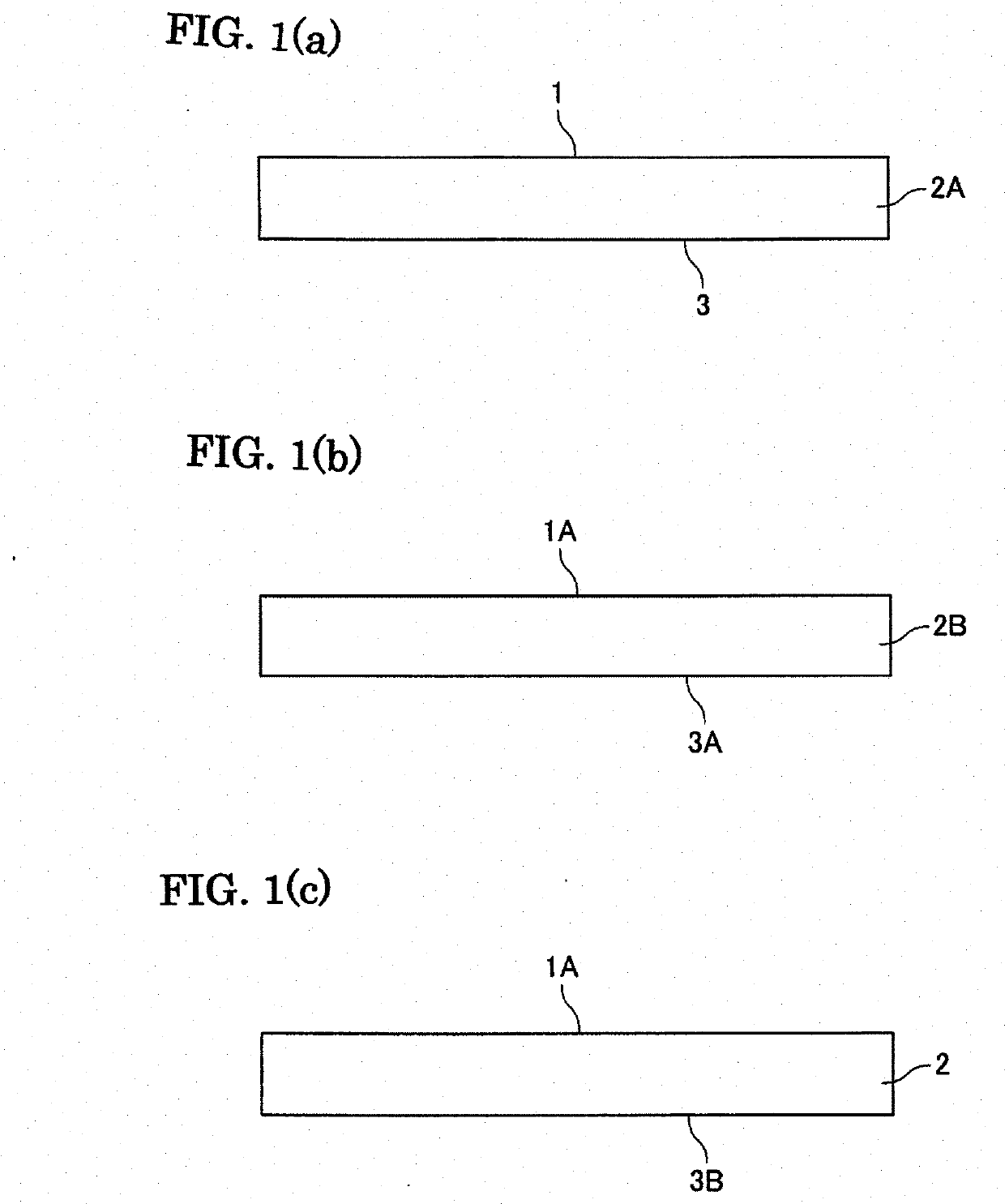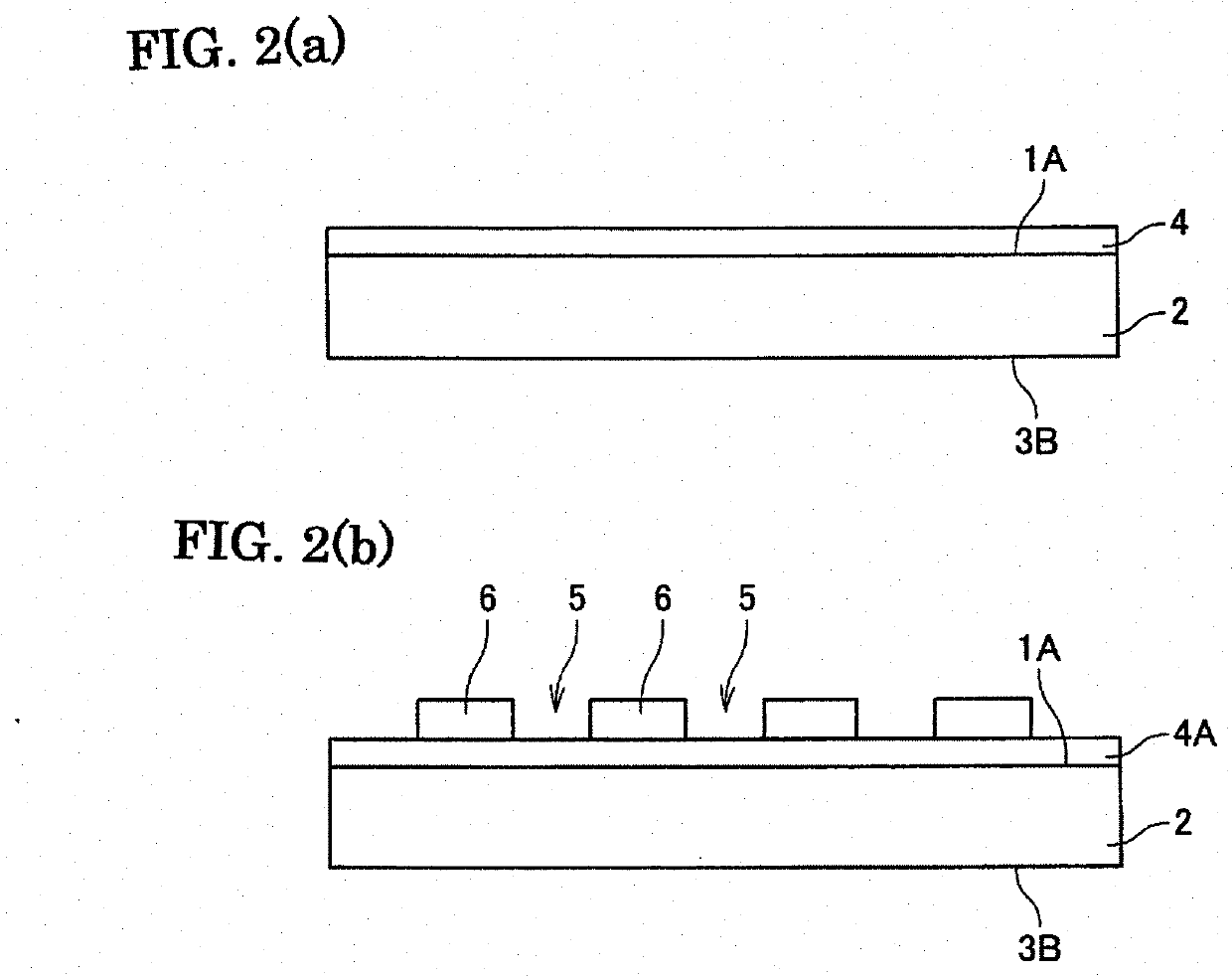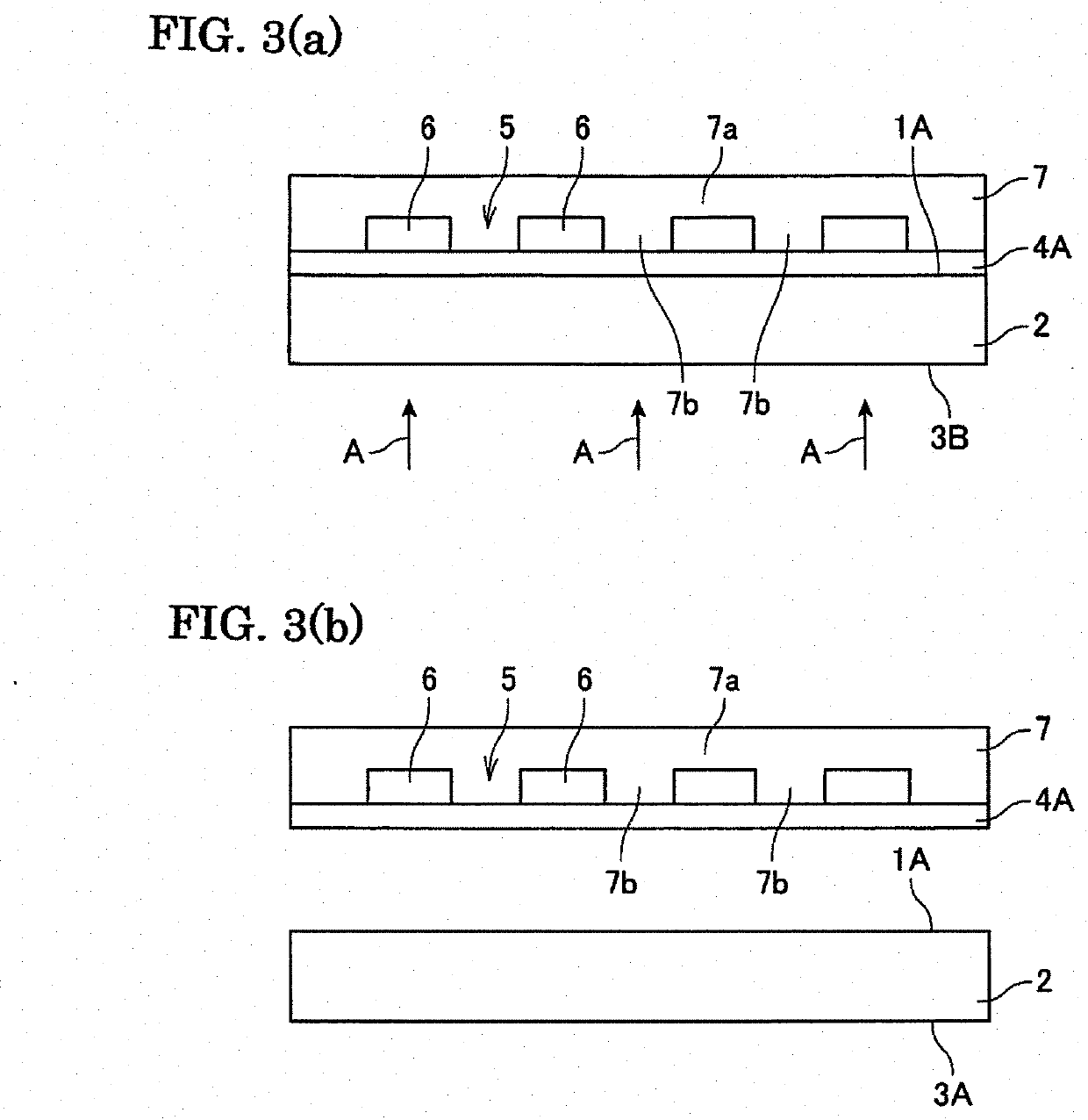Temporary-fixing substrate and method for molding electronic component
a technology of temporary fixing substrate and electronic components, which is applied in the direction of basic electric elements, electrical apparatus, semiconductor/solid-state device details, etc., can solve the problems of low light reaching the interface between the temporary fixing substrate and electronic parts, low yield of separation in many cases, and unique problems, so as to achieve easy incident into the substrate and easy separation
- Summary
- Abstract
- Description
- Claims
- Application Information
AI Technical Summary
Benefits of technology
Problems solved by technology
Method used
Image
Examples
##ventive example 1
Inventive Example 1
[0060]It was produced the temporary-fixing substrate, and the electronic parts and resin mold were separated from the temporary-fixing substrate, as shown in FIGS. 1 to 3.
[0061]Specifically, it was produced slurry by mixing the following components.
(Powdery Raw Material)
[0062]α-alumina powder having a specific surface area of 3.5 to 4.5 m2 / g and an average primary particle size of 0.35 to 0.45 μm
100 weight partsMgO (magnesia)0.025 weight partsZrO2 (zirconia)0.040 weight partsY2O30.0015 weight parts
(Dispersing Medium)
[0063]
Dimethyl glutarate 27 weight partsEthylene glycol0.3 weight parts
(Gelling Agent)
[0064]
MDI resin4 weight parts
(Dispersing Agent)
[0065]
High molecular surfactant3 weight parts
(Solvent)
[0066]
N,N-dimethyl amino hexanol0.1 weight parts
[0067]The slurry was injected into a mold of aluminum alloy at room temperature and then stood for 1 hour at room temperature. The slurry was then stood at 40° C. for 30 minutes to proceed the solidification and then rel...
##ventive example 2
Inventive Example 2
[0073]It was produced the temporary-fixing substrate and the electronic parts and resin mold were separated from the temporary-fixing substrate, according to the same procedure as those in the Inventive Example 1. However, the time period of performing the chemical mechanical polishing of the bottom face was shortened so that the line number of the scratches observed in the visual field was made 5 lines. As a result, the yield of the separation of the electronic parts and resin mold was proved to be 99.3%.
##ventive example 3
Inventive Example 3
[0074]It was produced the temporary-fixing substrate, and the electronic parts and resin mold were separated from the temporary-fixing substrate, according to the same procedure as the inventive Example 1. However, the time period of the chemical mechanical polishing of the bottom face is made longer, so that the line number of the scratches observed in the visual field was proved to be 0. As a result, the yield of the separation of the electronic parts and resin mold was proved to be 99.5%.
PUM
 Login to View More
Login to View More Abstract
Description
Claims
Application Information
 Login to View More
Login to View More - R&D
- Intellectual Property
- Life Sciences
- Materials
- Tech Scout
- Unparalleled Data Quality
- Higher Quality Content
- 60% Fewer Hallucinations
Browse by: Latest US Patents, China's latest patents, Technical Efficacy Thesaurus, Application Domain, Technology Topic, Popular Technical Reports.
© 2025 PatSnap. All rights reserved.Legal|Privacy policy|Modern Slavery Act Transparency Statement|Sitemap|About US| Contact US: help@patsnap.com



